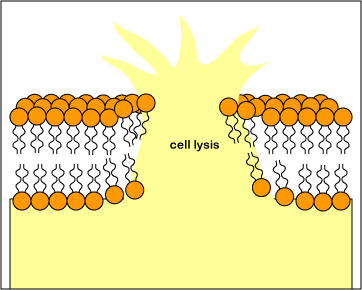
Multiple molecules of C9 combine with C5b,C6, C7, and C8 to form the Membrane Attack Complex (MAC). C5b6789n, functions as a Membrane Attack Complex (MAC). This helps to destroy Gram-negative bacteria as well as human cells displaying foreign antigens (virus-infected cells, tumor cells, etc.) by causing their lysis. It can also damage the envelope of enveloped viruses.
Last updated: August, 2019
Please send comments and inquiries to Dr.
Gary Kaiser